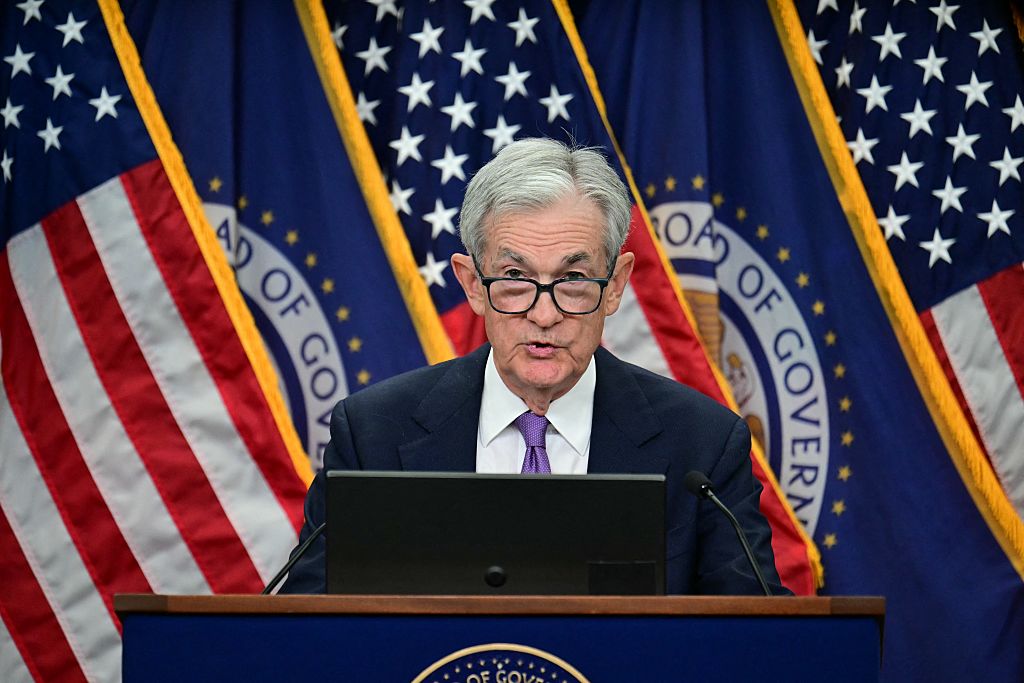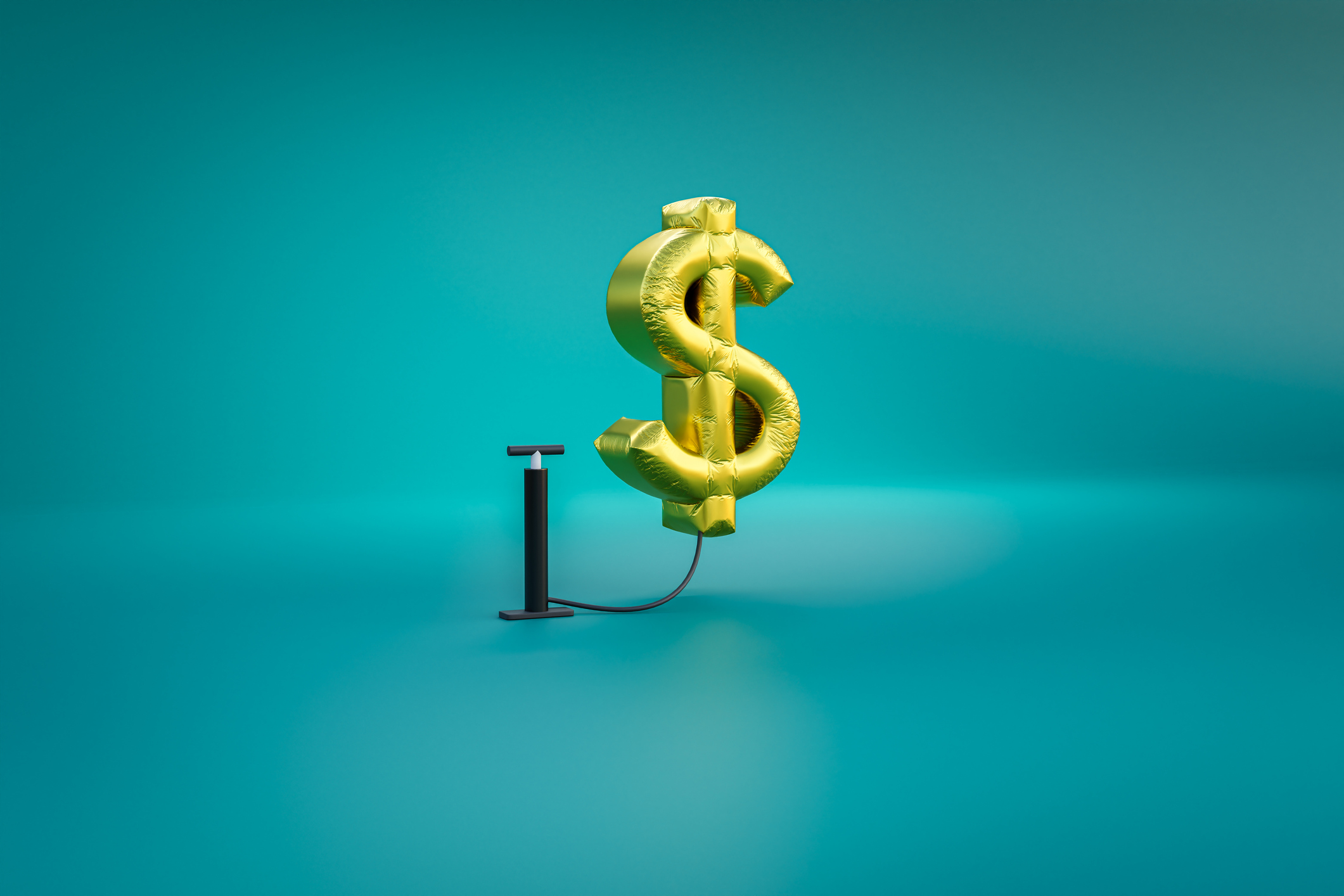Kiplinger GDP Outlook: Good Third Quarter, but Sub-2% Growth Will Come and Linger
Expect moderate growth through 2027.

Kiplinger’s Economic Outlooks are written by the staff of our weekly Kiplinger Letter and are unavailable elsewhere. Click here for a free issue of The Kiplinger Letter or to subscribe for the latest trends and forecasts from our highly experienced Kiplinger Letter team.
The government shutdown delayed the third-quarter GDP release, but signs suggest that growth was robust, around 3%. Consumer spending on electric vehicles before the EV tax credit ended on September 30, plus the continuing ramp-up in business spending on artificial intelligence, will have supported third-quarter growth, despite continued weakness in housing, nonresidential construction and government spending.
Fourth-quarter growth should be weak. Consumer and business spending will pull back to some degree, after they rose earlier in the year to get ahead of tariffs. Motor vehicle sales in particular will come in lower, given the surge in the third quarter. Of course, government spending will be affected by the federal shutdown. Now that the shutdown has ended, we expect that government employees will receive back pay, but government contractors will not, unless they were on previously funded projects. But one positive is that strong stock market gains this year should keep wealthier consumers spending.
From just $107.88 $24.99 for Kiplinger Personal Finance
Become a smarter, better informed investor. Subscribe from just $107.88 $24.99, plus get up to 4 Special Issues

Sign up for Kiplinger’s Free Newsletters
Profit and prosper with the best of expert advice on investing, taxes, retirement, personal finance and more - straight to your e-mail.
Profit and prosper with the best of expert advice - straight to your e-mail.
Sub-2% growth is here to stay for a while. Total annual growth for 2025 will be around 1.8%, because the annual growth figure is measured from 2024’s midpoint through mid-2025. We expect this sub-2% trend to continue through 2026 and 2027.
Trade deals with various countries have reduced the uncertainty that exporters and importers face, but if businesses can now plan better, they may pass on more of their tariff costs to customers. The effective tariff rate on imports is now around 15% across all goods. Higher rates are being imposed on commonly imported items, such as home furnishings, toys, sports equipment and the like, but they have not had a large impact on the Consumer Price Index yet. Price increases on motor vehicles will likely be coming later in the year as inventories of pretariff imported vehicles run low.
Tariffs will not cause a broader recession in the economy. Consumer sentiment is still low, though much more so among Democrats and independents than among Republicans. The Trump administration has not only been cutting federal employees, but also canceling contracts that sustain government contractors, nonprofits and universities. The ripple effect of canceled contracts beyond government agencies is unknown, but potentially high. Consumers will likely begin to save more because of slowing in the labor market. Foreign tourism has been down as well, perhaps subtracting a tenth of a point from GDP growth over the course of the year.
Source: Department of Commerce: GDP Data
Read more
Profit and prosper with the best of Kiplinger's advice on investing, taxes, retirement, personal finance and much more. Delivered daily. Enter your email in the box and click Sign Me Up.

David is both staff economist and reporter for The Kiplinger Letter, overseeing Kiplinger forecasts for the U.S. and world economies. Previously, he was senior principal economist in the Center for Forecasting and Modeling at IHS/GlobalInsight, and an economist in the Chief Economist's Office of the U.S. Department of Commerce. David has co-written weekly reports on economic conditions since 1992, and has forecasted GDP and its components since 1995, beating the Blue Chip Indicators forecasts two-thirds of the time. David is a Certified Business Economist as recognized by the National Association for Business Economics. He has two master's degrees and is ABD in economics from the University of North Carolina at Chapel Hill.
-
 A Financial Pro Breaks Retirement Planning Into 5 Easy Pieces
A Financial Pro Breaks Retirement Planning Into 5 Easy PiecesThis retirement plan focuses on five key areas — income generation, tax management, asset withdrawals, planning for big expenses and health care, and legacy.
-
 Financial To-Dos to Finish 2025 Strong and Start 2026 Stronger
Financial To-Dos to Finish 2025 Strong and Start 2026 StrongerDon't overlook these important year-end check-ins. Missed opportunities and avoidable mistakes could end up costing you if you're not paying attention.
-
 Nasdaq Leads as Tech Stages Late-Week Comeback: Stock Market Today
Nasdaq Leads as Tech Stages Late-Week Comeback: Stock Market TodayOracle stock boosted the tech sector on Friday after the company became co-owner of TikTok's U.S. operations.
-
 The November CPI Report Is Out. Here's What It Means for Rising Prices
The November CPI Report Is Out. Here's What It Means for Rising PricesThe November CPI report came in lighter than expected, but the delayed data give an incomplete picture of inflation, say economists.
-
 The Delayed November Jobs Report Is Out. Here's What It Means for the Fed and Rate Cuts
The Delayed November Jobs Report Is Out. Here's What It Means for the Fed and Rate CutsThe November jobs report came in higher than expected, although it still shows plenty of signs of weakness in the labor market.
-
 What to Expect from the Global Economy in 2026
What to Expect from the Global Economy in 2026The Kiplinger Letter Economic growth across the globe will be highly uneven, with some major economies accelerating while others hit the brakes.
-
 December Fed Meeting: Updates and Commentary
December Fed Meeting: Updates and CommentaryThe December Fed meeting is one of the last key economic events of 2025, with Wall Street closely watching what Chair Powell & Co. will do about interest rates.
-
 The Delayed September Jobs Report Is Out. Here's What It Means for the Fed
The Delayed September Jobs Report Is Out. Here's What It Means for the FedThe September jobs report came in much higher than expected, lowering expectations for a December rate cut.
-
 Shoppers Hit the Brakes on EV Purchases After Tax Credits Expire
Shoppers Hit the Brakes on EV Purchases After Tax Credits ExpireThe Letter Electric cars are here to stay, but they'll have to compete harder to get shoppers interested without the federal tax credit.
-
 October Fed Meeting: Updates and Commentary
October Fed Meeting: Updates and CommentaryThe October Fed meeting is a key economic event, with Wall Street turned into what Fed Chair Powell & Co. did about interest rates.
-
 The Delayed September CPI Report is Out. Here's What it Signals for the Fed.
The Delayed September CPI Report is Out. Here's What it Signals for the Fed.The September CPI report showed that inflation remains tame – and all but confirms another rate cut from the Fed.